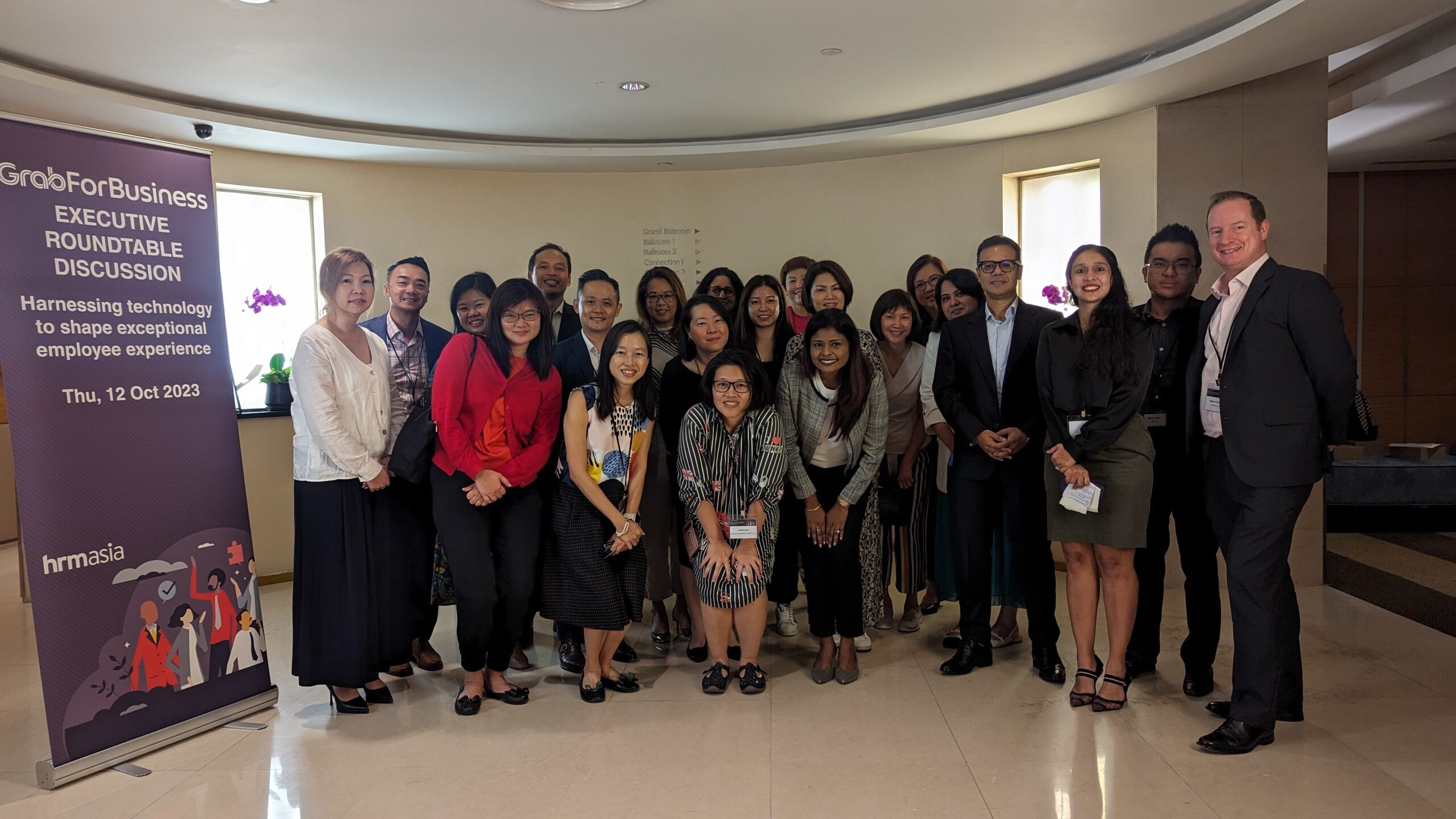Harnessing technology to shape exceptional employee experience

HR leaders convened at a roundtable discussion hosted by Grab For Business and HRM Asia to explore enhancing employee engagement through tailored experience programmes.
Many organisations and HR leaders can attest to the following challenges that plague their business strategies: escalating costs, constrained budgets, and increasingly unique challenges and demands from employees. Thus, it becomes more pertinent to leverage any advantage to the opportunities that arise, especially with regards to creating employee experience programmes to raise employee engagement.
Such was the objective of Grab For Business (GFB), which, in collaboration with HRM Asia, recently organised an exclusive Executive Roundtable Discussion: Harnessing Technology to Shape Exceptional Employee Experience. It saw 20 HR leaders from various organisations discuss best practices, shared insights on what their respective organisation was working on and delve into the role technology plays in creating transcendent employee experience programmes that are accessible and cost-effective for the average HR leader and their organisation.
Kicking off the highly engaging and informative roundtable, Ong Chin Yin, Chief People Officer at Grab, said, “My team and I have been thinking really hard about what the future of work would be like and how we play a part in dealing with the different dynamics. We see the future of work as not just hybrid working, but three areas that have to be tackled.”
These three areas, she added, include the freedom to live by their terms and decide when, where and how to work; helping employees augment themselves by being more “bionic” through technology; and increasing the depth of experience and convenience for any employee and increasing productivity for the company. “Let’s not be siloed. Let’s look at people experience across physical, human, and digital, and figure out how we can enhance the experience as a whole.”
The roundtable’s moderator, Shawn Liew, HRM Asia’s Head of Content Development, started off the interactive group discussion by asking leaders how they defined employee experience and what components comprised of its makeup, inviting leaders like Sara Yik, Chief Human Capital Officer, Singapore Institute of Management, to share their experiences.
Yik shared that to her, employee experience mattered at certain touchpoints and key moments, such as employee onboarding. Relating the typical challenges of employee onboarding such as delays in getting equipment ready and late orientation, the desire is to make the experience integrated and seamless, said Yik. This also extended to other key moments, such as promotions, off-boarding, but also the everyday experience of employees that impacts decisions, she added.
So how then can HR leaders do better to streamline processes and create easier workflows for their resource-strapped teams to look out for? Liew posed that question to the HR leaders in the room, asking how organisations were leveraging on technology to strengthen and make processes easier for people in HR to manage.
Wendy Xi, CHRO, DB Schenker, shared how as a HR leader, she likes to work the ground and see people face-to-face. This allowed her to see how her team was facing burnout due to the needs of the organisation shifting to a whole new system. Offering flexibility options to employees to reduce burnout was a viable option, but to do so, technology must be updated to accommodate to the needs of a distributed workforce. “I made a very early decision to relinquish the HR babysitting roles for on-boarding and empowered the managers to get them up to speed and organise their own teams,” she said, and the way they did so included apps and technology to track through KPIs in a more time-effective way.
Geeta Singh, Director, People Development at Google Asia, shared how Google was incorporating technology into HR support. “Everyone in the organisation needs different HR support,” she explained, and at Google, this includes tech and hardware support that could easily get rid of any unnecessary administration and reduce time wasted on key points like onboarding, phone, and hardware support. “We’re trying to see how we can do it in the HR realm,” she said and Google, working in AI, is also giving their HR team opportune time to experiment and work with AI to ease workloads and reduce frustration.
READ MORE: Grab to upskill 3 million workers across Southeast Asia
Bringing the roundtable to a close, Namrata Goyal, Regional Manager at Grab For Business, summarised how it was important that organisations use automation and technology to reduce the amount of work that can regularly stack up. One such example is the delivery of team bonding experiences.
“Catering food, for example, comes with its own specific challenges,” she shared, explaining how organising a simple event would require managing people’s specific food needs, budgets, as well as locating vendors on a month-to-month basis. GFB looks to streamline that process by providing technology that could remember specific needs with easy access to thousands of food merchants for different budgets. And this is a mere snapshot of what GFB could do for employers to help enhance employee engagement and experience.



